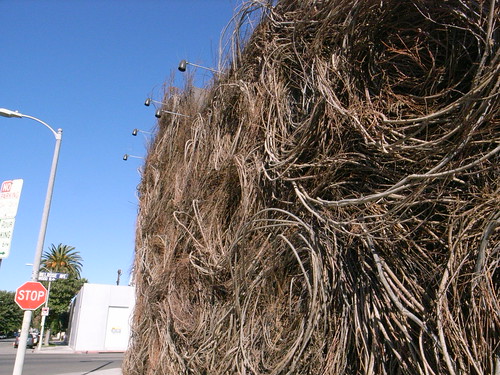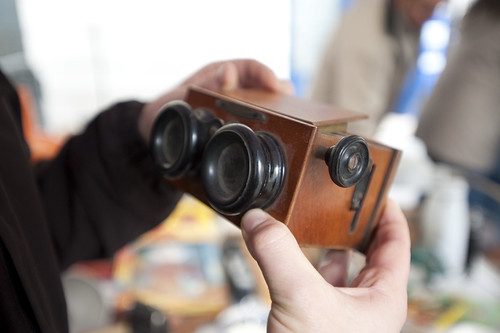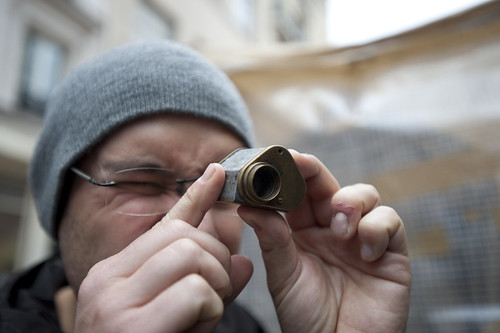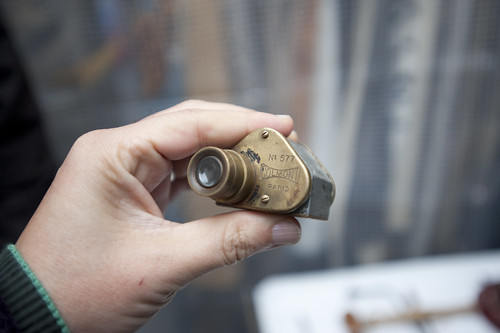I just finished Richard Powers’ intriguing industrial historical novel Gain, which was brought to my attention by a couple of passages in Bruno Latour’s Reassembling the Social
, which was brought to my attention by..&c.
One of the passages in the Latour is a sidebar in which he deploys an extended quotation from Powers in order to capture the multivalent prismatic network of associations that invigorate what a corporation is. There are no singular definitions — there are associations of the firm from a legal perspective, from the perspective of the guy working on a loading dock, from the point of view of shareholders who own lots of a company, and those who only own enough to have a modest retirement (they hope), from the perspective of environmental activists, from a historical point of view in the sense of corporate history, or a historical point of view from the perspective of labor history — and so on. The multivalent identity of a corporation is a complex thing, and even more complex to represent.
In this quotation, Powers’ captures the complexity of the corporation in a wonderfully succinct fictional historical moment. We’re in the denouement of the novel. The Clare company has come from a rich history of family enterprise in the American colonial days to today. Starting as an intrepid candle making trio (two Claire brothers and an Irish widower who is a candle craftsman) to a multinational, multiproduct conglomerate. As the CEO prepares for an interview on public television about this storied company, he ponders a question the producer has asked him to consider, jotting notes on a legal pad.
To make a profit. To make a consistent profit. To make a profit in the long run. To make a living. To make things. To make things in the most economical way. To make things for the longest possible time. To make things that people need. To make things that people desire. To make people desire things. To give meaningful employment. To give reliable employment. To give people something to do. To do something. To provide the greatest food to the greatest number. To promote the general welfare. To provide for the common defense. To increase the value of the common stock. To pay a regular dividend. To maximize the net worth of the firm. To advance the lot of all the stakeholders. To grow. To progress. To expand. To increase knowhow. To increase revenues and to decrease costs. To get the job done more cheaply . To compete efficiently. To buy low and sell hight. To improve the hand that humankind has been dealt. To produce the next round of technological innovations. To rationalize nature. To improve the landscape. To shatter space and arrest time. To see what the human race can do. To amass the country’s retirement pension. To amass the capital required to do anything we want to do. To discover what we want to do. To vacate the premises before the sun dies out. To make life a little easier. To make people a little wealthier. To make people a little happier. To build a better tomorrow. To kick something back into the kitty. To facilitate the flow of capital. To preserve the corporation. To do business. To stay in business. To figure out the purpose of business.
Kennibar thinks of adding: “To beat death,” but he’s afraid he’ll forget what he meant when the cameras roll this afternoon.
Richard Powers. Gain: A Novel. p. 398
What is the relevance of this? In part, reflecting upon the capability of a good story teller to capture a richness that escapes even the most well-researched corporate histories. In this sense, the power and force of the well-written word resonates with the sensibilities of “design fiction” to convey an idea, a concept, a *new thing* or even an *old thing* in a more compelling way than wireframes and storyboards.
Latour makes this point in an earlier passage — the wonderful dialogue chapter between the student and his professor — when the persistently baffled and obstinate student fights the losing fight for *objectivity*, not realizing that this moves him so far away from his material, from his site of curiosity that he conveys nothing but clichés. And in part the dialogue encouraged me to find this book, Gain.
S: But certainly nothing is objectively beautiful — beauty has to be subjective…taste and color, relative…I am lost again. Why would we spend so much time in this school fighting objectivism then? What you say can’t be right.
P: Because the things people call ‘objective’ are most of the time the clichés of matters of fact. We don’t have a very good description of anything: of what a computer, a piece of software, a formal system, a theorem, a company, a market is. We know next to nothing of what this thing you’re studying, an organization, is. How would we be able to distinguish it from human emotions? So, there are two ways to criticize objectivity: one is by going away from the object to the subjective human viewpoint. But the other direction is the one I am talking about: back to the object. Positivists don’t own objectivity. A computer described by Alan Turing is quite a bit richer and more interesting than the ones described by Wired magazine, no? As we saw in class yesterday, a soap factory described by Richard Powers in Gain is much livelier than what you read in Harvard case studies. *The name of the game is to get back to empiricism.*
Why do I blog this? A question of the the how and why of conveying material and ideas and histories in a way that is both empirical and with the powerful disbelief-suspension mechanics of a good story. Using fiction to do the work of designing as well using fiction in the work of communicating design that moves away from silly knee-jerk assumptions about what is “good” or what will make a profit. What is conceptual and innovative beyond the borders of ho-hum least-common denominator kruft?
Continue reading Thickly Imbricated




